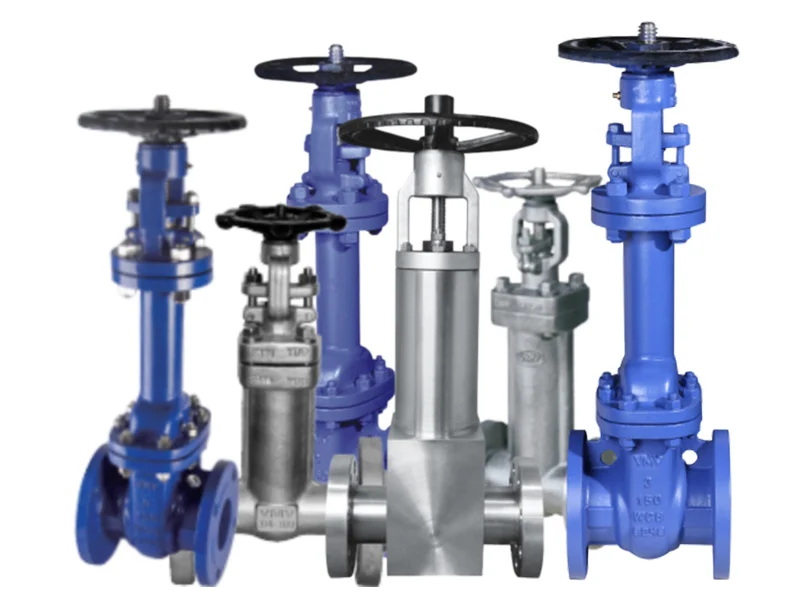Bellows valves are specialized valves that utilize a metal bellows as the core stem seal. Their most significant feature is the dual sealing structure of the bellows and packing, which effectively prevents media leakage, achieving zero leakage, ensuring production safety and protecting the environment. The bellows expands and contracts as the valve stem rises and falls, ensuring a tight seal while preventing media corrosion on the stem. These valves offer long service life and high safety, making them particularly suitable for harsh operating conditions such as those involving toxic, flammable, explosive materials, or those with high temperatures and pressures. They are critical equipment for ensuring the safe operation of industrial systems.

Operating Principle
The operating principles of different types of bellows valves vary. For example, a bellows-sealed globe valve relies on the movement of the valve stem to control the opening and closing of the disc, thereby shutting off and connecting the medium. A bellows safety valve primarily opens and closes automatically based on the medium’s pressure. When the pressure in the container exceeds a certain value, the valve automatically opens based on the medium’s own pressure, rapidly discharging a certain amount of the medium. When the pressure drops to an acceptable level, the valve automatically closes. A bellows pressure reducing valve uses the pressure of the medium itself, sensing changes in outlet pressure through the bellows to drive the disc’s opening, thus achieving automatic pressure stabilization.
Features of Bellows Valves
• Excellent Sealing Performance: A bellows-sealed globe valve, for example, utilizes a metal bellows welded to the valve stem to form a media isolation barrier. This dual-seal structure, combined with a packing seal, ensures zero valve stem leakage, completely eliminating the drawbacks of conventional valve stems and packing seals, which can age quickly and leak easily.
• Structural and Performance Advantages: The valve body is compact, and the fluid passages are often S-shaped and streamlined. Both bellows regulating valves and bellows valves share this feature, offering low pressure drop, high flow rates, and a wide adjustable range.
• Other Features: Some bellows valves feature double bellows, easy maintenance, position indicators, and no handwheel for lifting.
Common Types and Applications
• Bellows Gate Valve: The valve has a plug-shaped disc and is suitable for full opening and closing only; adjustment and throttling are not permitted. It is suitable for medium, low, and high pressure environments and is generally installed horizontally in the pipeline. It is commonly used in pipeline systems requiring shutoff and control of the media.
• Bellows Control Valve: This is a pressure-balanced control valve with a bellows seal structure. It is suitable for control systems with highly toxic and corrosive media and is used in the chemical, photovoltaic, and silicone industries.
• Bellows Sealed Globe Valve: Primarily used in steam, gas, and liquid pipeline systems in the petroleum, chemical, pharmaceutical, and power industries. It has both shutoff and connection functions and is suitable for demanding applications with high-purity, toxic, or flammable and explosive media.
• Bellows Safety Valve: A core safety accessory for pressure vessels, it is widely used in the power, metallurgy, petroleum, and chemical industries. It is suitable for media such as air and steam (temperature limit 300°C) and serves as an overpressure protection device.
• Bellows Pressure Reducing Valve: Primarily used in steam, air, and non-corrosive gas pipeline systems with temperatures not exceeding 180°C. It maintains a constant outlet pressure by adjusting the valve opening. It is suitable for the petroleum, chemical, and light industries.
Daily Maintenance of Bellows Valves
Appearance Inspection
Regular Inspection: Periodically inspect the valve’s appearance, checking for cracks, pinholes, corrosion, deformation, and other defects in the valve body, as well as for peeling or damage to the surface coating. If serious problems such as cracks are present in the valve body, the valve should be replaced promptly to prevent leaks and other safety hazards.
Marking Inspection: Verify that the valve markings are clear and complete. If unclear, remark them promptly for easier identification and operation.
Sealing Performance Inspection
Comprehensive Inspection: Inspect the valve stem and stuffing box, the connection between the valve body and bonnet, and the valve inlet and outlet connections for leaks. Treatment: Minor leaks can be resolved by adjusting the packing gland or replacing the gasket. Severe leaks require repair or replacement of the sealing surface.
Operating Mechanism Inspection
Flexibility Check: Regularly inspect operating mechanisms, such as handwheels, handles, electric actuators, and pneumatic actuators, to ensure smooth operation and free of sticking, looseness, or damage. For manual valves, the handwheel should turn easily without noticeable resistance or clogging. For electric or pneumatic valves, check the actuator’s motor, cylinder, solenoid valve, and other components to ensure proper operation and accurate transmission of control signals.
Cleaning and Maintenance
External Cleaning: Regularly use a clean cloth or brush to remove dust, oil, rust, and other debris from the valve surface. Valves operating in harsh environments (such as those exposed to dust, humidity, or corrosive media) require more frequent cleaning. Stubborn rust and oil stains can be cleaned with an appropriate detergent, but be careful not to corrode the valve material.
Internal Cleaning: Before disassembling the valve body, blow out the valve cavity with compressed air to remove impurities and residue that could affect normal operation.
Lubrication and Maintenance
Location Identification: Regularly lubricate the valve stem, bearings, gears, chains, and other transmission components and moving parts based on the valve’s operating requirements and operating environment.
Apply or Refill: Apply or refill an appropriate amount of lubricant to reduce friction and wear, ensuring smooth and flexible valve operation.
Pressure Test
Test Requirements: Regularly pressure test the valve to verify its sealing performance and strength. The test pressure is generally 1.1 to 1.5 times the valve’s nominal pressure, and the pressure should be maintained for at least the specified time.
Frequency Adjustment: For critical valves operating in high-temperature, high-pressure, or flammable and explosive environments, increase the frequency of pressure tests to observe the valve for leaks, deformation, and other signs.
Special Component Inspection
Bells Inspection: Bellows are critical components and require regular inspection for leaks, damage, or deterioration. Replace any problems promptly.
Stem Inspection: Inspect the valve stem for rust, bending, or damage. Replace or repair any problems as necessary. Ensure there are no leaks at the connection between the valve body and stem. If any leaks occur, address them promptly.
Of course, if you want to save time and effort, you can choose Newton. Newton has professional after-sales guarantee services. Once the valve you purchased from Newton fails, please contact us in time and we will solve your problem as soon as possible.

